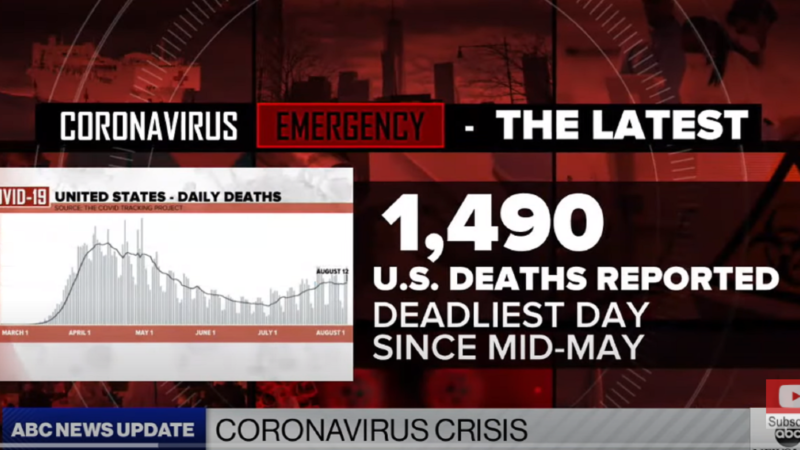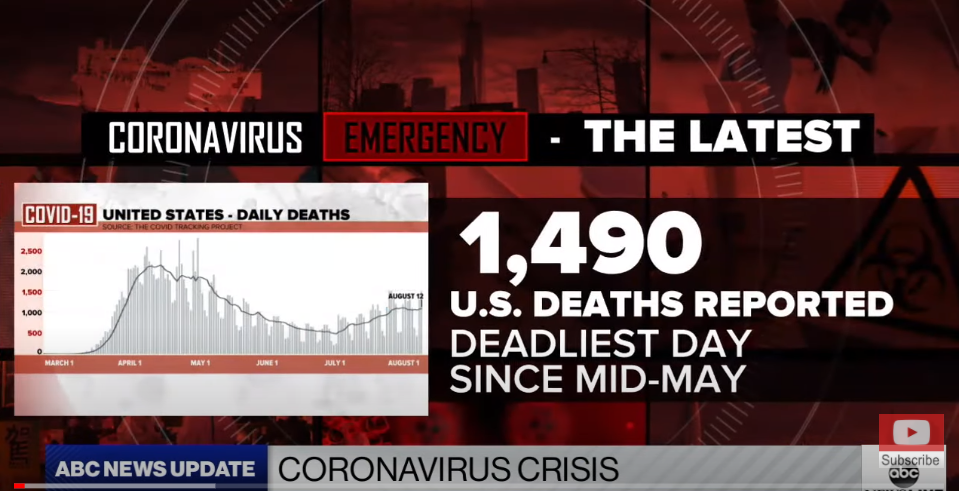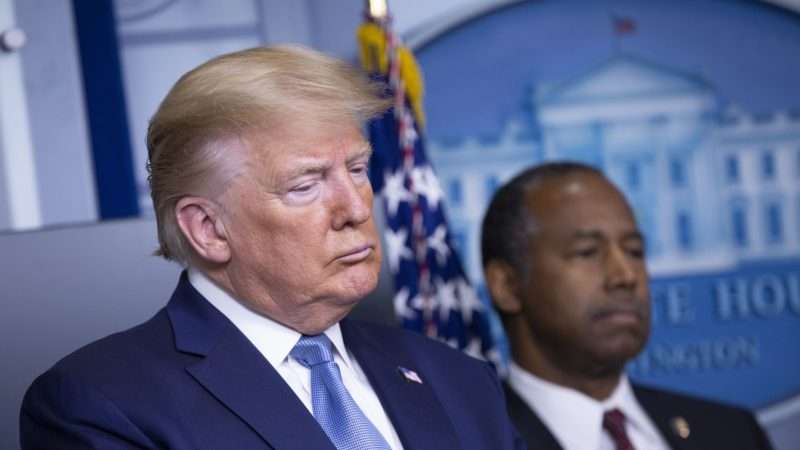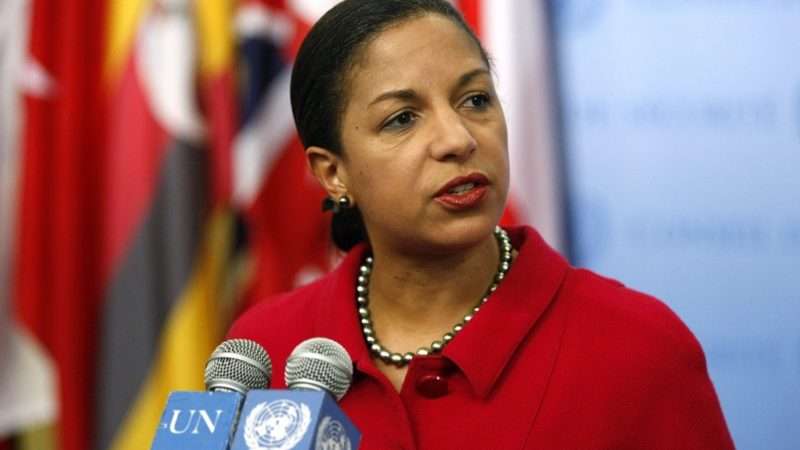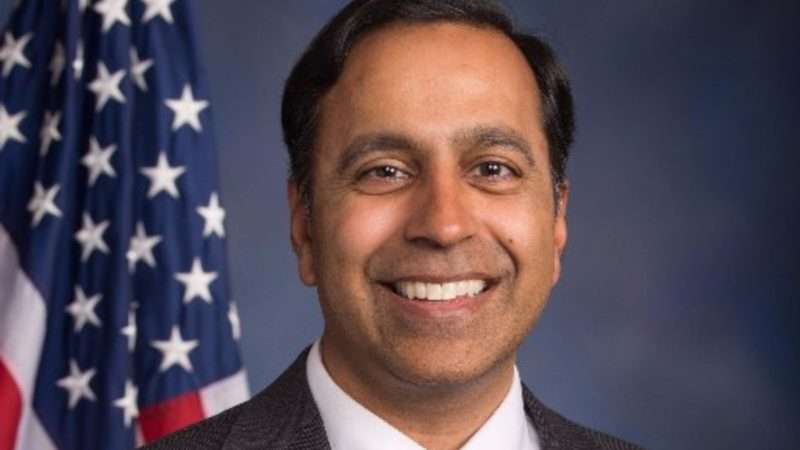Few political transformations have been more remarkable to witness than Ben Carson’s constant ping-ponging on housing policy. The Housing and Urban Development (HUD) secretary can’t seem to make up his mind about whether loosening restrictions on new housing development is a great idea the federal government should encourage or a left-wing plot to destroy the American Dream.
On Sunday, The Wall Street Journal published a joint op-ed by Carson and President Donald Trump in which the two warned that eliminating single-family zoning would import urban dysfunction into thriving suburban communities.
“A once-unthinkable agenda, a relentless push for more high-density housing in single-family residential neighborhoods, has become the mainstream goal of the left,” the article says. “We will save our cities, from which these terrible policies have come, and we will save our suburbs.”
They go on to criticize the elimination of single-family zoning in Minneapolis and Oregon, as well as heretofore unsuccessful efforts by California state Sen. Scott Wiener (D–San Francisco) to preempt local zoning regulations to allow five-story apartments near job centers and transit lines.
The op-ed represents a marked change from the views expressed by Carson in 2018, when he told the Journal that he intended to update federal fair housing rules to encourage the same kind of high-density construction he’s now criticizing.
“I want to encourage the development of mixed-income multifamily dwellings all over the place,” Carson said then, saying that he would “incentivize people who really would like to get a nice juicy government grant” to reform their zoning codes.
Sunday’s op-ed brings Carson’s housing views back to where they were in 2015, when the then–presidential candidate was criticizing an Obama-era fair housing rule for stepping on the toes of local communities’ zoning powers.
“The rule would fundamentally change the nature of some communities from primarily single-family to largely apartment-based areas by encouraging municipalities to strike down housing ordinances that have no overtly (or even intended) discriminatory purpose—including race-neutral zoning restrictions on lot sizes and limits on multi-unit dwellings, all in the name of promoting diversity,” wrote Carson in The Washington Times, comparing such changes to failed socialist experiments.
To quote Homer Simpson: “Some people never change. Or, they quickly change and then quickly change back.”
Carson’s constantly shifting stripes on housing policy represent a broader schizophrenia within the Trump administration. Its efforts to encourage the rollback of predominately local regulations on housing development have given way to toxic culture-war rhetoric about saving the suburbs.
A good marker of the administration’s changing tune is its update of the Obama administration’s 2015 Affirmatively Furthering Fair Housing (AFFH) rule.
That rule—which required jurisdictions receiving federal housing grants to report on obstacles to fair housing and then propose remedies for eliminating those obstacles—has long been a target of conservative criticism for being overly burdensome, overly perspective, and ultimately ineffective. It’s what Carson was criticizing as a threat to single-family zoning in his 2015 Washington Times op-ed.
His 2018 interview in The Wall Street Journal, by contrast, was about wanting to change the AFFH rule so its reporting requirements did a better job of spotlighting how single-family zoning worsened affordability.
In January 2020, the Trump administration issued a proposed replacement AFFH rule that aimed to do just that. It asked HUD grantees to report on a few narrow measures of housing affordability and housing quality, and then propose three policies for improving those metrics. The January rule also held out the possibility that jurisdictions who saw their affordability metrics improve would be rewarded with additional grant money.
This wasn’t a full-fledged free market approach—the government was still attaching strings to grant programs that probably shouldn’t exist in the first place. Still, it at least had the potential to encourage localities to adopt their own market reforms.
But in July, when the Trump administration released a final AFFH replacement rule, it explicitly criticized the January proposal as federal overreach and instead promised to preserve local government control above all else. Meanwhile, the federal grants will continue to flow.
The new Trump-Carson op-ed touts the July rule as an example of Trump’s commitment to safeguarding the suburbs.
As other commenters have pointed out, it’s clear that Trump has become convinced that casting himself as a defender of suburban America, à la Nixon 1968, is the path to electoral success. The new op-ed should be read in that light.
This change in rhetoric and tune is not only disappointing on policy grounds; it’s probably strategically mistaken. By abandoning the fight against restrictive zoning laws, Trump and Carson are forfeiting their ability to call out the progressive hypocrisy on housing policy. By maintaining restrictions on new housing construction, many liberal urban areas and their suburban satellites perpetuate the economic inequality and racial segregation that their politicians decry.
Instead of calling this out, Trump and Carson are defending the development regulations of deep-blue suburbs whose residents hate the idea of another four years of Trump in the White House almost as much as they hate the prospects of another four units of housing in their neighborhood.
Carson and Trump are not wrong when they write that “decades of liberal governance have tragically made many urban cities unaffordable.” A major reason for some liberal cities’ high housing costs is their hostility to new development.
Likewise, when the two say they “believe the suburbs offer a wonderful life for Americans of all races and backgrounds when they are allowed to grow organically, from the bottom up,” that would seem to forestall support for regulations that require suburban communities to forever remain exclusively single-family neighborhoods.
It is true that the federal government shouldn’t be dictating local land-use decisions. Reforming the zoning codes that drive up the price of housing and drive out working- and middle-class residents is something that state and local governments will ultimately have to tackle. A good way to reduce the federal role in local housing policy would be to eliminate the housing and transportation grant programs that give the feds leverage over local regulations.
But rather than push the idea of spending cuts, Carson and Trump are arguing that the federal government should continue to provide funding to local communities without any consideration for how they spend that money, or for whether local regulations conflict with the purposes of those federal grant programs. In doing so, they are embracing harmful housing regulations.

from Latest – Reason.com https://ift.tt/348JVAX
via IFTTT
